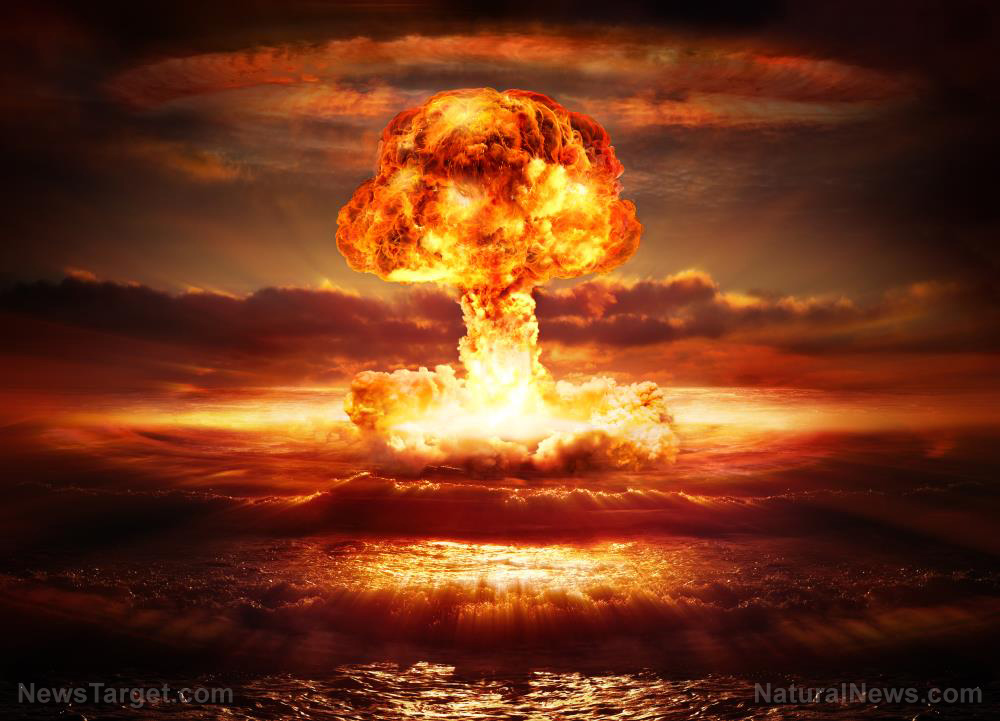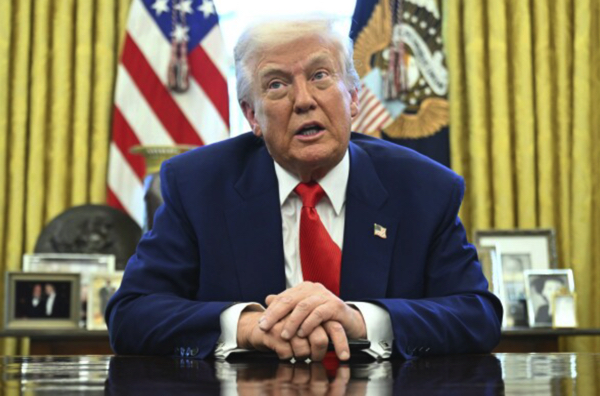Health Ranger Report: Fadi Lama identifies the West's structural failures
By kevinhughes // 2025-04-28
Tweet
Share
Copy

- Renowned author and engineer Fadi Lama identifies critical failures in Western finance, industry and energy, leading to a decline in economic and geopolitical power. His analysis, rooted in data and historical context, highlights the rise of Russia, China, Iran, India and the BRICS nations as new global powers.
- Lama's research reveals a 98 percent correlation between energy consumption and real economic output, suggesting that traditional GDP metrics are less reliable. This insight underscores the economic strength of nations that prioritize energy production, such as Russia and China, over those that restrict it, like the West.
- Lama argues that Western nations have lost sovereignty due to the influence of privately owned central banks, which control monetary and financial policies. This loss of control has led to decisions that harm the public, such as the suppression of energy production and the financialization of the economy.
- By 2017, the combined real economy of Russia, Iran and China (RIC) had surpassed that of the G7 nations. China's economic growth, in particular, has been meteoric, and these nations are now outperforming the West in essential goods production and military capabilities.
- Lama suggests that the West is moving from a unipolar to a multipolar world, where the declining influence of Western powers is being countered by the rise of the RIC. The West's attempts to isolate these nations through sanctions and ideological conflicts are seen as a strategy to maintain control, but the shift in global power dynamics is inevitable.
Energy-economy correlation
One of the most striking findings from Lama's research is the 98 percent correlation between energy consumption and real economic output. This correlation, he argues, provides a more accurate measure of economic performance than traditional GDP metrics, which are often inflated by services and financialization. For instance, a haircut in New York – which might cost 50 times more than in Mexico – does not necessarily reflect better service. By focusing on energy, Lama can more accurately assess the true economic strength of nations. Lama contends that the West, despite having abundant energy resources, is choosing to lock them up through policies driven by the green climate agenda. This, he argues, is a form of "energy suicide" that is harming the economy. In contrast, Russia and other rising powers are tapping into their energy resources to fuel industrial output and military capabilities. The West's decision to shut down energy resources, such as the Keystone XL Pipeline Project, is seen as a move contrary to the interests of its own population.Loss of sovereignty
A key theme in Lama's book is the loss of sovereignty in Western nations. He traces this back to the establishment of privately owned central banks, starting with the Bank of England in 1694. In the U.S., the Federal Reserve, established in 1913, marked a significant shift in power from the government to private financial interests. "Western countries are not sovereign countries. If you are the head of the family, your concern is to take care of your family. As in a sovereign country, it's very easy to figure out their policies because the policy adopted by the government or administration is what is beneficial for the country," Lama said. "In the West, the Western nations lost their sovereignty because when you started having privately owned central banks it means the monetary and financial policy is no longer in the hands of the government. If you are the manager or the head of the government and you don't have control over these two, you don't have any real power." This loss of sovereignty, Lama argues, led to decisions that are detrimental to the public, such as the suppression of energy production and the financialization of the economy.West's collapse and rise of RIC
Lama's research shows a dramatic shift in economic power. By 2017, the combined real economy of Russia, Iran and China (RIC) had overtaken that of the G7 nations. China, in particular, has seen a meteoric rise, with its real economy now dwarfing that of America. This shift is reflected in the production of essential goods and military capabilities. (Related: The FALL of the WEST and why the world’s economic future belongs to China, Russia, India and Iran.) For example, Russia's T-72 tank, costing around $1.5 million, has proven more effective than the U.S.′s $10 million M1 Abrams tank. Similarly, Iran's low-cost drones have outperformed expensive U.S. interceptors. Lama identifies three main pillars of Western power: the global financial sector (including the World Bank, IMF and commodity exchanges), the virtual reality created by mainstream media and the military-industrial complex. These pillars, he argues, are eroding, and the West is losing its ability to project power. The recent Iranian strikes and the ongoing conflict in Ukraine highlight the limitations of Western military might. Lama suggests that the West is transitioning from a unipolar to a multipolar world. The money powers, recognizing their declining influence, are attempting to split the world into two regions: One under their control and another dominated by the RIC. This strategy is evident in the West's efforts to isolate China and Russia through economic sanctions and ideological conflicts. Lama's analysis offers a sobering yet compelling view of the global economic and political landscape. His book, "Why the West Can't Win," challenges conventional wisdom and provides a data-driven perspective on the structural failures of Western civilization. As the world moves toward a multipolar order, the West must adapt, or risk further decline. Watch the full interview between Fadi Lama and the Health Ranger Mike Adams below. This video is from the Health Ranger Report channel on Brighteon.com.More related stories:
The West needs radical political change towards freedom. China’s rare earth move threatens U.S. military and tech dominance. West destroying its own financial system – Putin. Sources include: Brighteon.com FadiLama.Substack.comTweet
Share
Copy
Tagged Under:
collapse Russia Ukraine Iran China Federal Reserve Mike Adams World Bank GDP IMF US Health Ranger Report Health Ranger west financial crash energy consumption energy supply Bank of England BRICS energy suicide money powers Fadi Lama
You Might Also Like
Federal probe into UC Berkeley’s concealed Chinese funding reveals national security breach
By Willow Tohi // Share
URGENT REPORT: The China Import Embargo – What to Stockpile Now Before America Runs Out
By Mike Adams // Share
U.K. drops plans for large-scale TROOP DEPLOYMENT to Ukraine
By Ramon Tomey // Share
Pakistan’s nuke threats stir fear amid Kashmir clash with India
By Cassie B. // Share
Klitschko: Ukraine may need to temporarily cede territories for peace
By Ramon Tomey // Share
Recent News
The fight for free speech: Substack stands firm against censorship pressure
By willowt // Share
"Climate Change Reconsidered" offers fresh perspective in the climate change debate
By kevinhughes // Share










